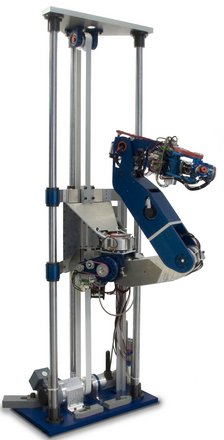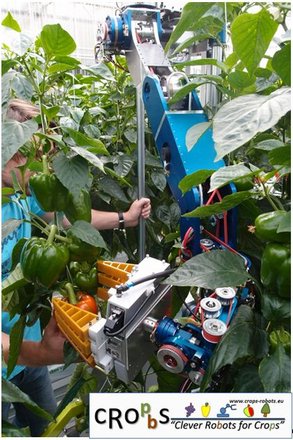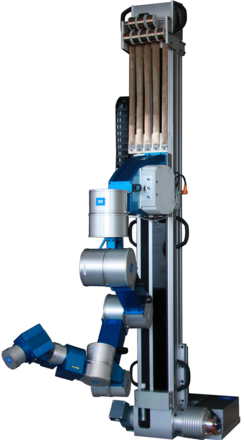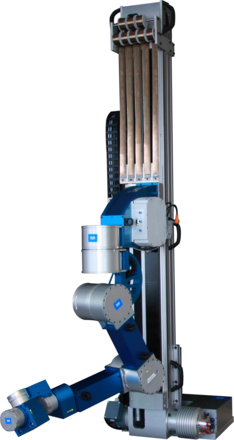Projekthomepage: www.crops-robots.eu
Project overview
Many site-specific agricultural and forestry tasks, such as cultivating, transplanting, spraying, trimming, selective harvesting, and transportation, could be performed more efficiently if carried out by robotic systems. However, to date, agriculture and forestry robots are still not available, partly due to the complex, and often contradictory, demands for developing such systems. On the one hand, agro-forestry robots must be of reasonable cost, but on the other, they must be able to deal with complex, dynamic, and partly changing tasks. Addressing problems such as continuously changing conditions (e.g., rain and illumination), high variability in both the products (size and shape) and the environment (location and soil properties), the delicate nature of the products, and hostile environmental conditions (e.g. dust, dirt, extreme temperature and humidity) requires advanced sensing, manipulation, and control. Since it is impossible to model a-priori all environments and task conditions, the robot must be able to learn new tasks and new working conditions. The solution to these demands lies in a modular and configurable design that will keep costs to a minimum by applying a basic configuration to a range of agricultural applications. At least a 95% yield rate is necessary for economical feasibility of an agro-forestry robotic system.
Objectives
The main objective of CROPS is to develop a highly configurable, modular and clever carrier platform comprising a carrier plus modular parallel manipulators and “intelligent tools” (sensors, algorithms, sprayers, grippers) that can easily be installed onto the carrier and that are capable of adapting to new tasks and conditions. Both the scientific know-how and a number of technological demonstrators will be developed for the agro management of high value crops like greenhouse vegetables, orchard fruits, and grapes for premium wines. The CROPS robotic platform will be capable of site-specific spraying (targeted spraying only on foliage and selected targets) and selective harvesting of fruit (i.e., it will detect the fruit, determine its ripeness, move towards the fruit and grasp it and softly detach it). Another objective of CROPS is to develop techniques for reliable detection and classification of obstacles and other objects to enable successful autonomous navigation and operation of the platform in plantations and forests. The agricultural and forestry applications share many research areas, primarily regarding sensing and learning capabilities.
The project is coordinated by the Wageningen University & Research Center (WUR) in the Netherlands. There are fourteen partners -including the Institute of Applied Mechanics- in the consortium from several European countries as well as Israel and Chile.
The research project Crops – “Intelligent sensing and manipulation for sustainable production and harvesting of high value crops, clever robots for crops” is funded by the European Commission.
During the CROPS project, three manipulator prototypes have been developed. The first and the third (final) prototype are illustrated below.
Pictures




Videos
TUM Manipulator Demonstration Video.
Manipulator_Demo_640x400 (low quality)
Manipulator_Demo_1920x1200 (high quality)
Sweet Pepper Harvesting Demonstration (First Generation)
Harvesting_640x400 (low quality)
Harvesting_920x1200 (high quality)
Sweet Pepper Harvesting Demonstration (Second Generation)